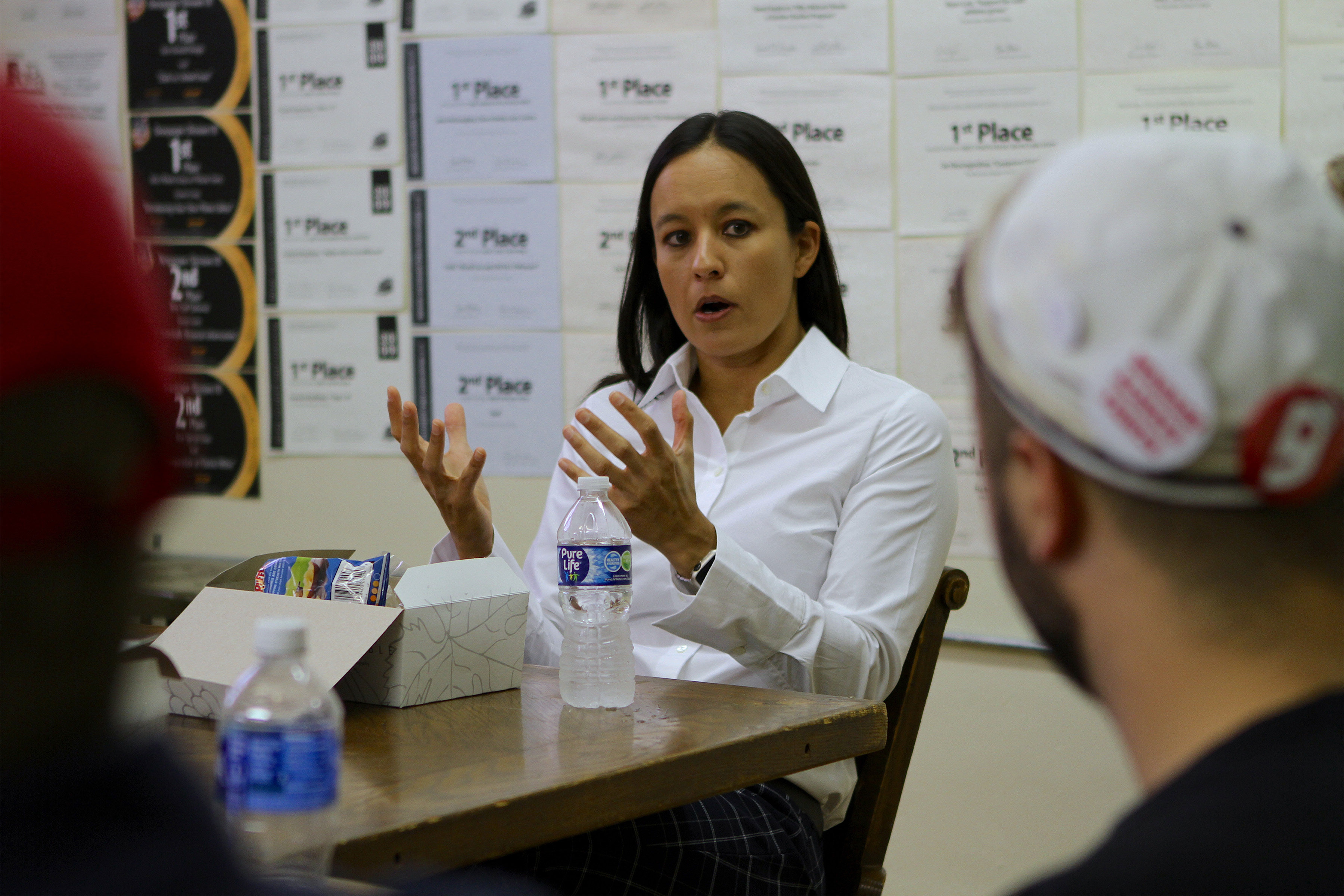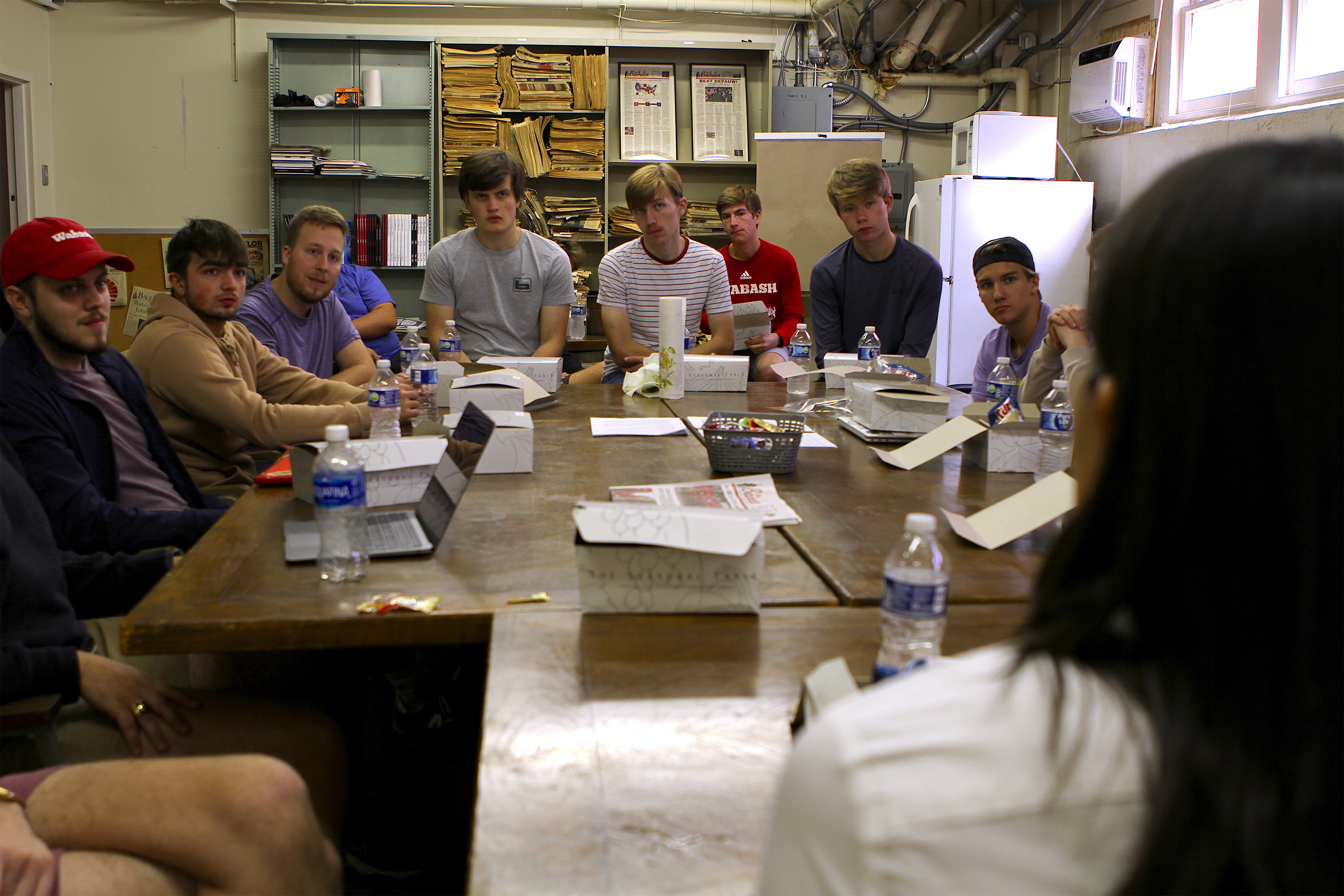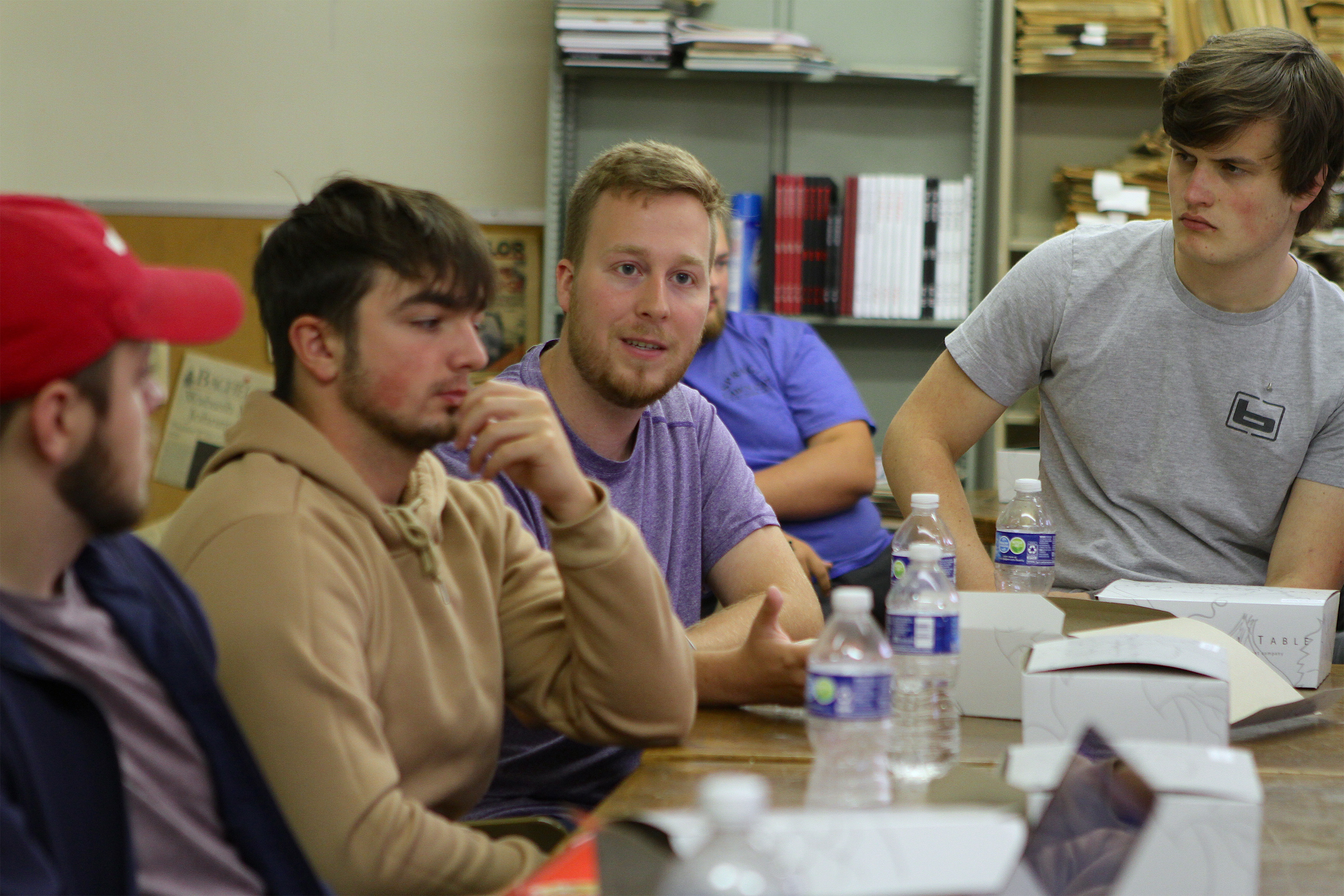How do we keep bias out of stories?
It was one of the many questions members of The Bachelor staff posed to Vanessa Otero during her recent visit to campus as part of the President’s Distinguished Speaker Series. Otero is the CEO and Founder of Ad Fontes Media and the creator of the Media Bias Chart.

There might not be a clear-cut answer to the question, especially at a place like Wabash where the average class size is 13 students, nearly 50% of students are varsity athletes, and most are involved in at least one of the more than 50 student clubs.
“It’s such a small campus,” Sam Benedict ’25, Bachelor’s editor-in-chief explained to Otero during a Q&A lunch with the newspaper staff.
“There are many times where we find a reporter’s involvements or interests overlap with the topics we are writing about,” he said. “What are some of your tips to help avoid that possible bias? What can we do to stay objective?”
The discussion comes at a time when trust in the mass media nationwide continues to decline.
A recent survey conducted by The Knight Foundation and Gallup News found that only 26% of Americans have a favorable opinion of the news media, while 53% hold an unfavorable view. Additionally, 50% say there is so much bias in the news media that it is often difficult to sort out the facts.
“In journalism and in law, the most helpful thing I ever learned was that ethics is hard,” said Otero, a former patent attorney who holds a B.A. in English from University of California, Los Angeles (UCLA) and a J.D. from the University of Denver. “Admitting that it’s hard, and that these conflicts of interest and mitigation of bias are not easy, that’s a good first step.”
There is no such thing as an unbiased journalist, Otero explained, just as there is no such thing as an unbiased human being.

“The fundamental thing about journalism is mitigating conflicts of interests,” Otero told the students. “And, in small communities, they’re not always avoidable. If you’re an active student —involved in Student Senate and tennis (for example)—you’re just naturally going to have that conflict of interest. What should you do, just not have that conflict of interest? No. You have to work with it.”
Otero said journalists have dealt with this issue for a long time, and one solution is to “create dividing lines.” She gave the group a couple examples of conflict of interest that happens in her own business, Ad Fontes Media.
After success of her original Media Bias Chart graphic—which rates media sources in terms of political bias and reliability—Otero founded Ad Fontes Media in 2018 to meet demand for a map to help people navigate the complex media landscape, and for comprehensive content analysis of media sources, according to the company’s website.
Today, Ad Fontes Media uses a systematic approach to content analysis in which a team of politically-balanced professional analysts examine and categorize news content. This creates data that is useful to news consumers, educators, marketers, and even publishers themselves.
Communication is key, Otero told The Bachelor, even when it’s uncomfortable.
“You have to be very clear with each other (editors and reporters on staff) and with your readers about expectations and what your purpose is,” she said. “You have to stand up and lay out what your values are as a publication. People can still criticize you and your motives, but transparency and keeping an open line of communication will make a huge difference.”
Logan Weilbaker ’25, Bachelor’s managing editor, said Otero’s visit was both enlightening and reassuring.
“I think she reinforced a lot of good practices that we have already been doing,” he said. For example, Bachelor reporters purposely try to avoid writing stories in which they have a personal interest.

There is always more room for improvement, however, when it comes to tackling bias.
As Otero advised, student-journalists must: seek out comment from diverse sources; think critically and be mindful of word choice as “writers can easily manipulate how people perceive an issue through the choice of words;” avoid opinion; and support statements with research and verifiable facts.
Benedict said he appreciated the opportunity to learn from Otero and her own experiences.
“It’s extremely helpful for us to get to talk with professionals involved in the industry,” he said. “I think all of our writers took a lot away from meeting with her.”
“She gave us additional tools,” Weilbaker added, “to be ethically-better journalists.”